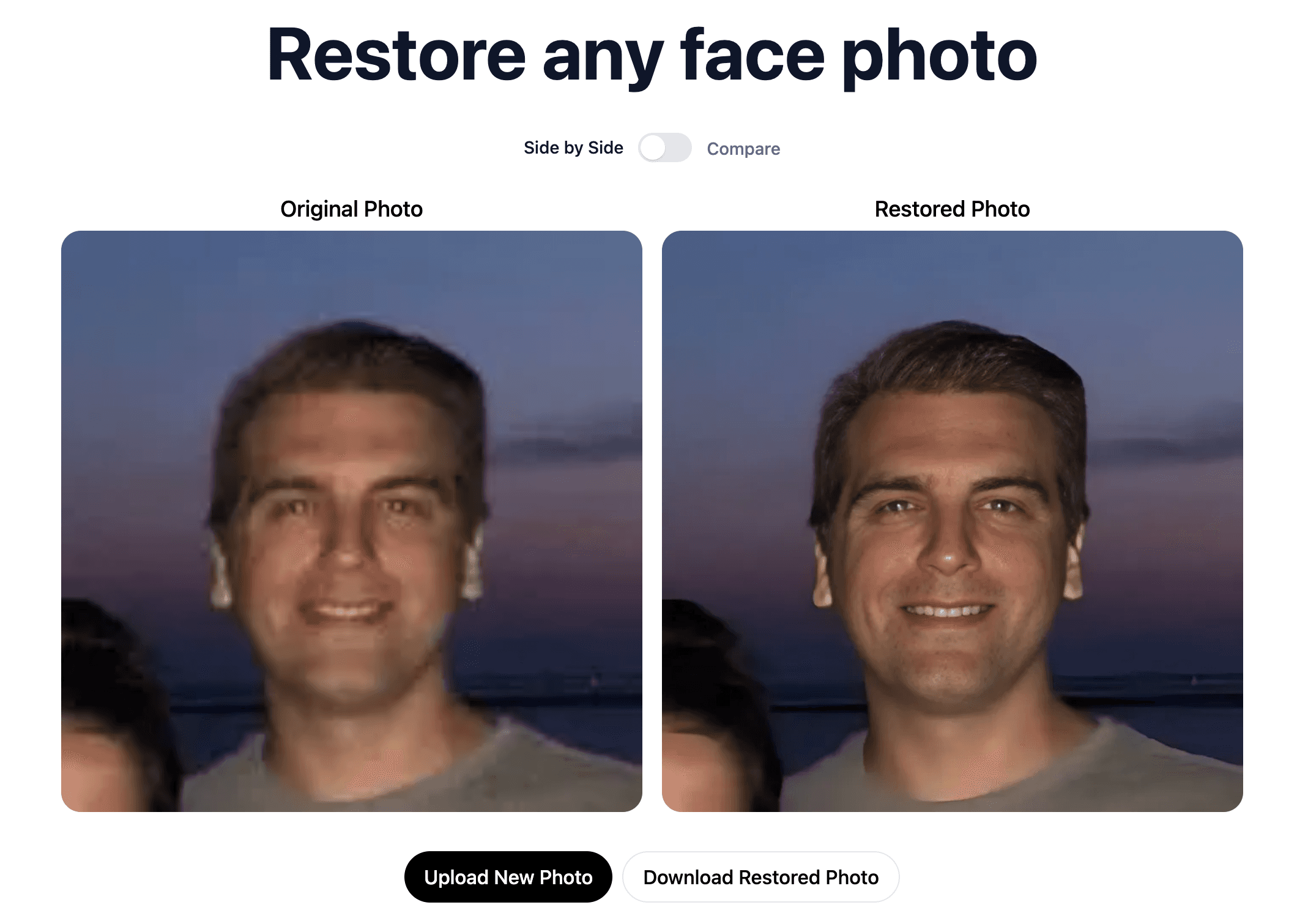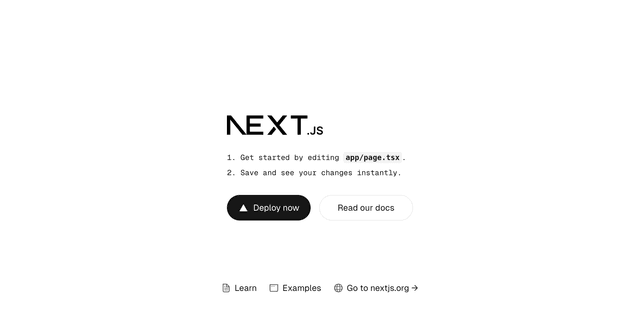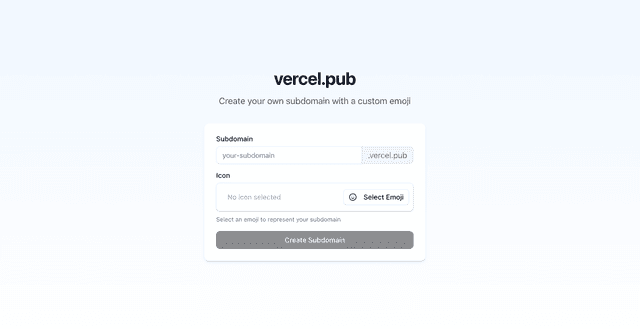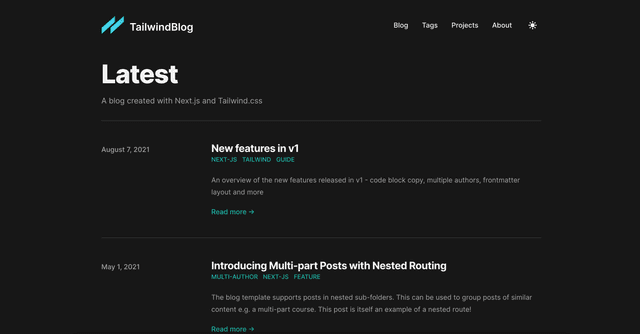
RestorePhotos.io
This project restores old face photos using AI. Watch the 4 minute explainer video to see how I built this or see the 15 second demo.
How it works
It uses an ML model from the Applied Research Center called GFPGAN on Replicate to restore face photos. This application gives you the ability to upload any photo, which will send it through this ML Model using a Next.js API route, and return your restored photo.
Running Locally
Note: I just added auth so these steps are not complete as of now. You can git clone from this specific commit.
Cloning the repository the local machine.
Creating a account on Replicate to get an API key.
- Go to Replicate to make an account.
- Click on your profile picture in the top right corner, and click on "Dashboard".
- Click on "Account" in the navbar. And, here you can find your API token, copy it.
Storing API key in .env file.
Create a file in root directory of project with env. And store your API key in it, as shown in the .example.env file.
If you'd also like to do rate limiting, create an account on UpStash, create a Redis database, and populate the two environment variables in .env as well. If you don't want to do rate limiting, you don't need to make any changes.
Installing the dependencies.
Running the application.
Then, run the application in the command line and it will be available at http://localhost:3000.
One-Click Deploy
Deploy the example using Vercel:
Powered by
This example is powered by the following services:


